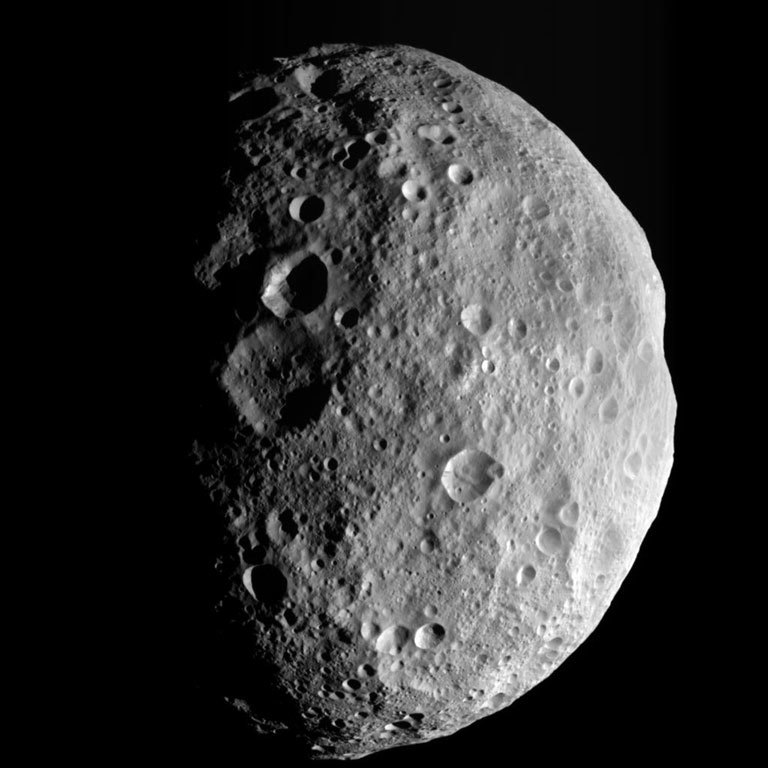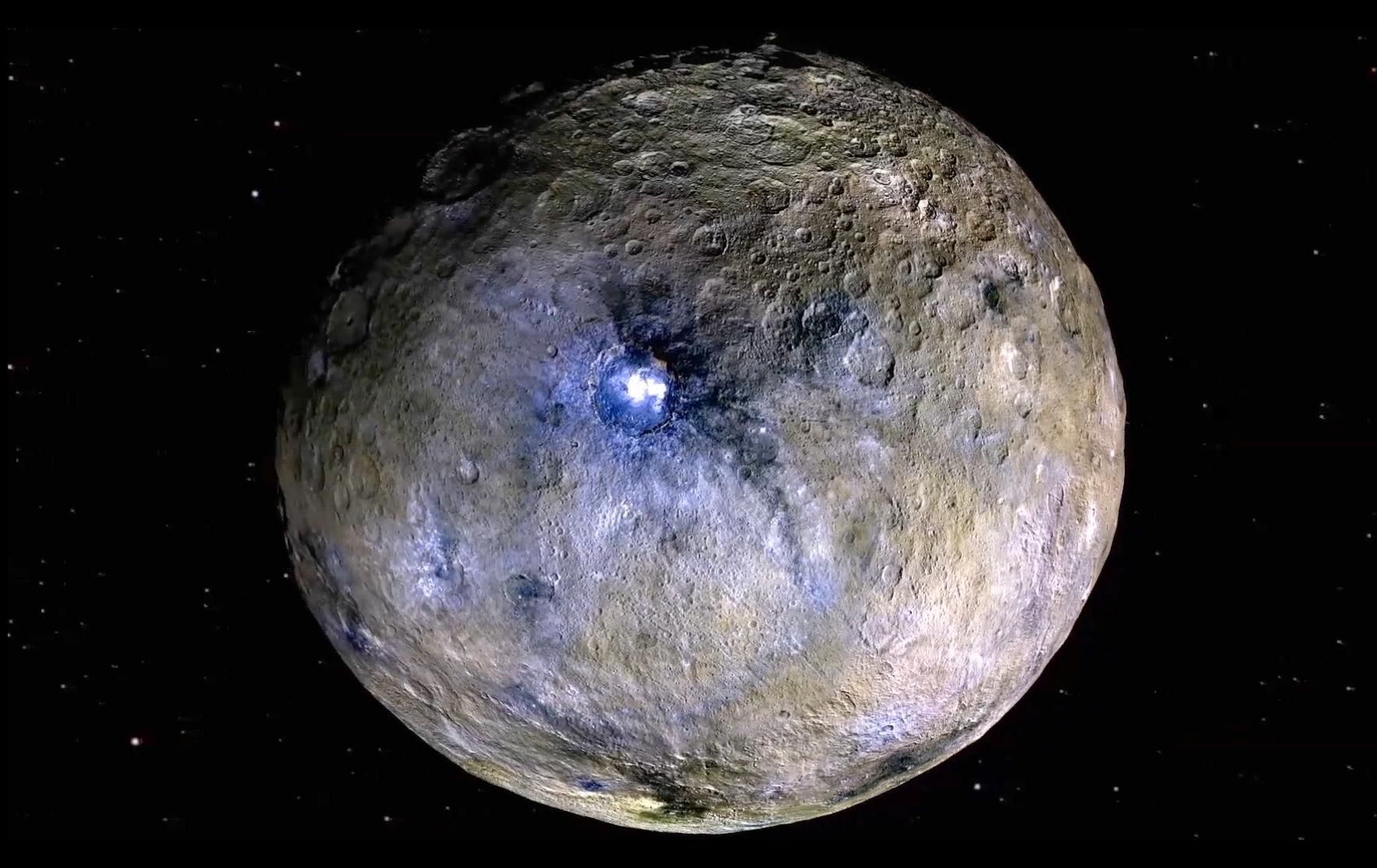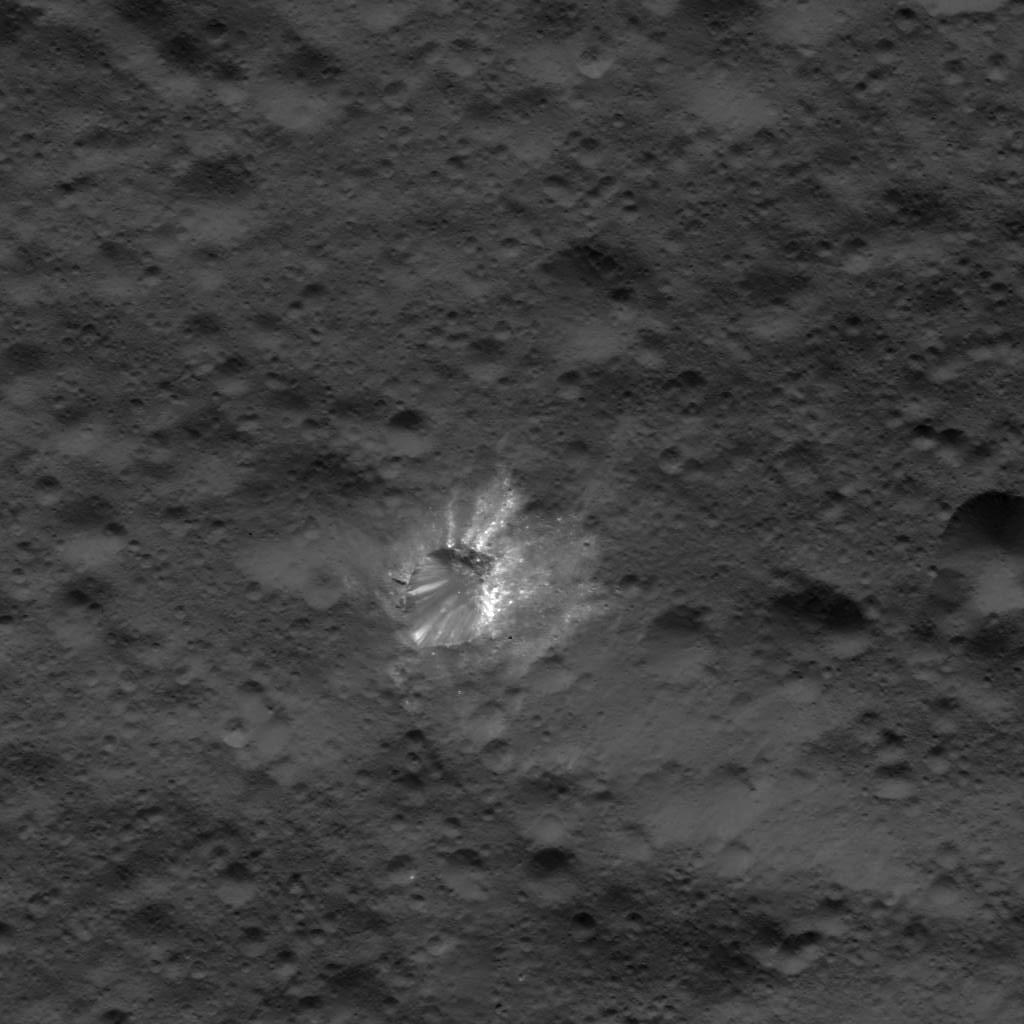
This image is from the last sequence of images NASA's Dawn spacecraft obtained of the giant asteroid Vesta, looking down at Vesta's north pole as it was departing in 2012. Credit: NASA/JPL-Caltech/UCLA/MPS/DLR/IDA

Image of Ceres showing the crater with the water-ice. Credit: NASA/JPL
The probe was first launched Sept. 27, 2007.
Feb. 17, 2009: Mars Gravity Assist
July 16, 2011: Vesta Arrival. Vesta is a rocky world.
Sept. 5, 2017: Vesta Departure
March 5, 2015: Ceres Arrival
June 2016: End of prime mission
July 2016: Start of first extended mission
October 2017: Start of second extended mission
Nov. 1, 2018: End of Mission
While in orbit, the probe learned that the inner solar system’s only dwarf planet, albeit never fully differentiated, was an ocean world where water and ammonia of unknown provenance reacted with silicate rocks. As the ocean world froze and sublimed into space, salts and other telltale minerals concentrated into deposits that are now exposed vividly in many locations across the surface, awaiting easy sampling by future missions.
By analyzing data collected near the end of the mission, Dawn scientists have concluded that the liquid in the crater came from a deep reservoir of brine, or salt-enriched water inside the asteroid. By studying Ceres' gravity, scientists learned more about the dwarf planet's internal structure and were able to determine that the brine reservoir is about 25 miles (40 kilometers) deep and hundreds of miles wide. In early June 2018, it fired its engine for the last time, to move into a lower orbit around the asteroid Ceres. This orbit is less than 30 miles (50 kilometers) above the surface of Ceres -- 10 times closer than the spacecraft had ever been.
Dawn collected gamma ray and neutron spectra, which help scientists understand variations in the chemical makeup of Ceres' uppermost layer. That very low orbit garnered some of Dawn's closest images yet.
Powered by an efficient ion engine, Dawn was the first mission to orbit a main belt asteroid. And it was the first to visit a dwarf planet and orbit two targets on a single mission.

